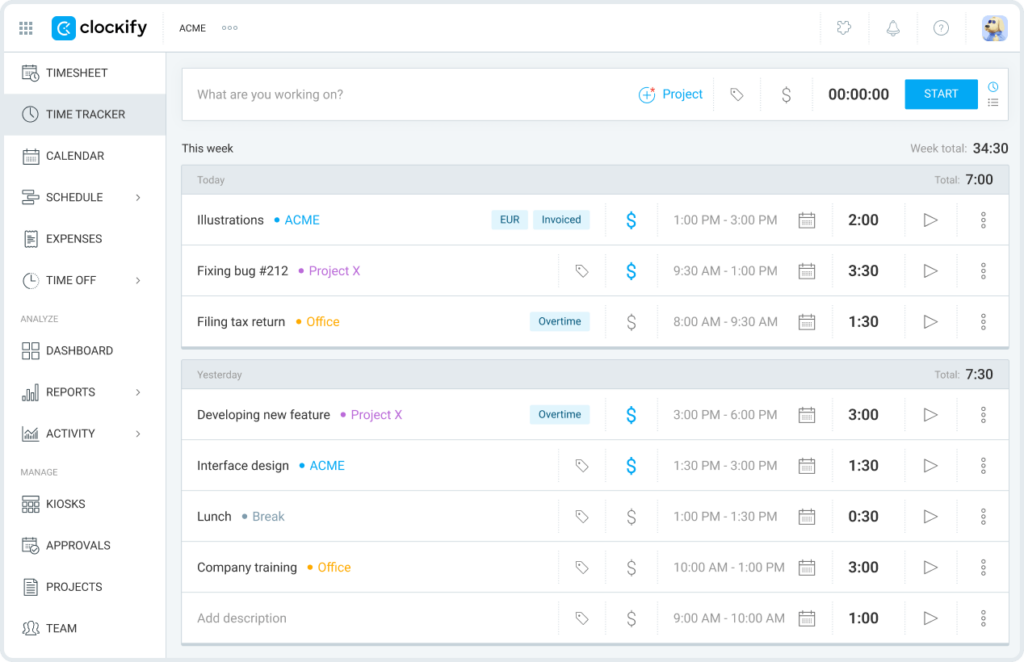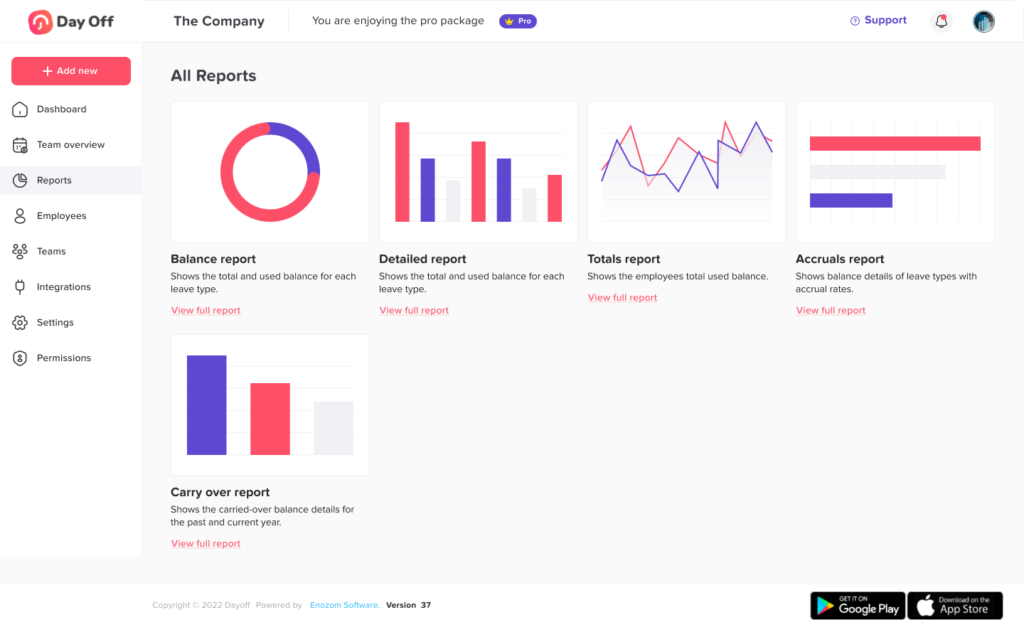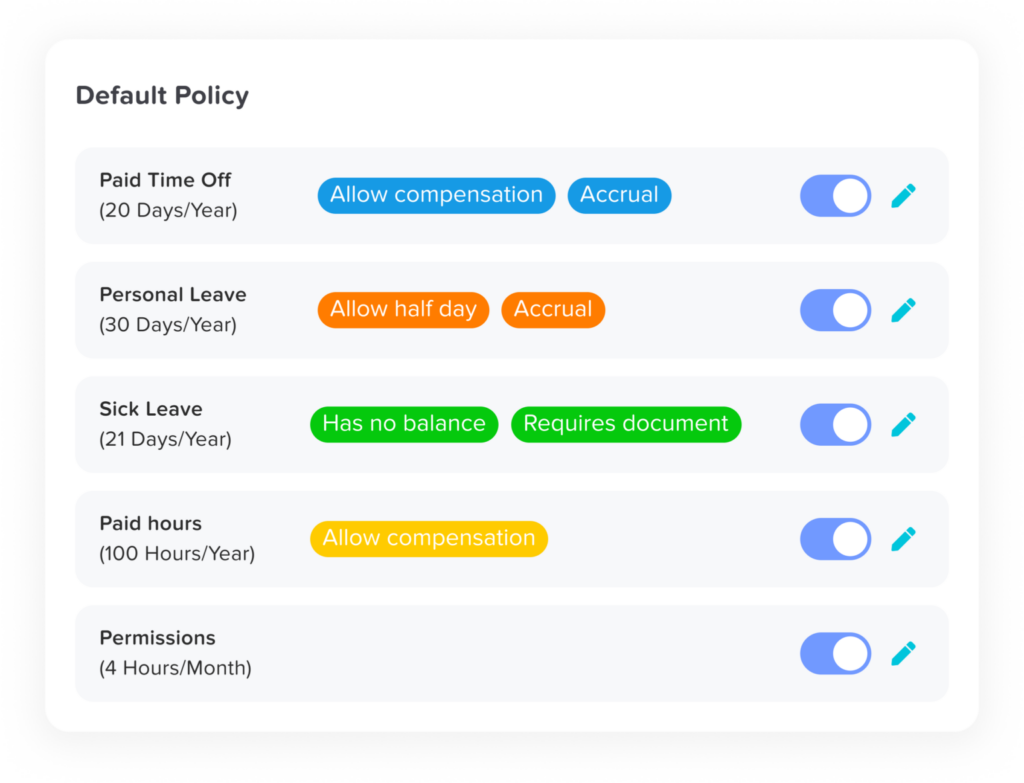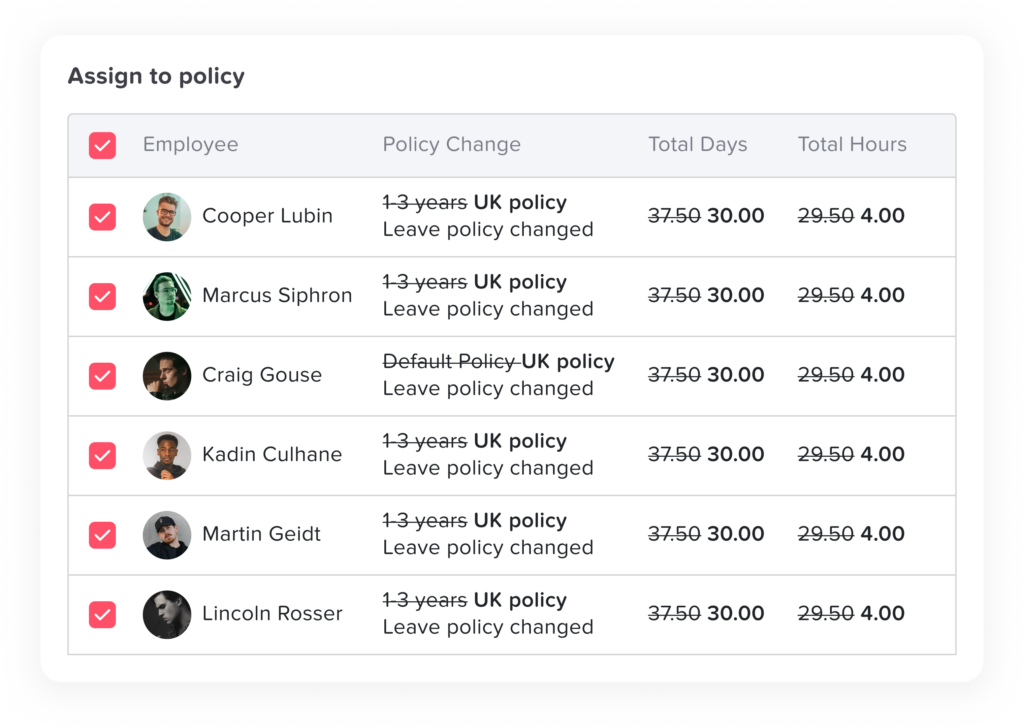Managing employee holidays is a critical yet complex task for businesses. Whether it involves tracking leave balances, ensuring adequate staffing, or complying with labor laws, manual holiday tracking can lead to errors, inefficiencies, and stress for HR teams. Fortunately, holiday tracking software has emerged as a solution, streamlining leave management processes and minimizing errors. Here’s how this software can save time and reduce mistakes for organizations of all sizes.
Day Off
The #1 Leave Tracker for your team’s PTO, vacations and absences, Day Off will help you to Manage PTO and absences in one place. In seconds you will set up your leave policies, approval workflow and enjoy a unique experience.
The “Day Off” app concept revolves around providing users a platform to manage their personal, sick, and vacation days more effectively. features aimed at both individual employees and organizations.
- Employees can track their balances up to date information about their available time off.
- You can add unlimited numbers of employees.
- Supports various leave types (e.g., annual, sick, maternity/paternity leave) and Supports Days and Hours balance, you can add unlimited numbers of leave types and leave policies.
- You can Customize week starting day settings according to your company’s operational days.
- Setting up public holidays specific to your country or region, by importing holidays from Google.
- The app can integrate with ( Slack, Google Kalender, Outlook Calendar and Teams)
- Supports Accruals & Carry overs.
1. Automated Leave Tracking
One of the primary benefits of holiday tracking software is automation. Unlike spreadsheets or paper records, the software automatically calculates leave balances, accruals, and remaining days off based on pre-set rules. Employees can view their leave balances in real time, reducing the need for back-and-forth communication with HR.
For example:
When an employee submits a leave request, the system automatically checks their available balance.
Accruals are updated monthly or annually based on the organization’s policy.
Any unused vacation days that roll over to the next year are seamlessly accounted for.
Additionally, automation ensures consistency across departments and reduces the risk of human error. By eliminating manual calculations, HR teams can save significant time and focus on strategic tasks like employee engagement and retention.
2. Error-Free Calculations
Manual holiday tracking often leads to errors, such as miscalculating leave balances, incorrect holiday approvals, or missing critical dates. These mistakes can create employee dissatisfaction and even legal risks. Holiday tracking software ensures accuracy by:
Applying consistent rules for leave policies.
Preventing double-booking of vacations within a team.
Flagging conflicts with company policies, such as exceeding allowable leave limits.
For instance, if an organization’s policy prohibits more than three employees from being on leave at the same time, the software will alert managers before approving conflicting requests. This level of precision reduces misunderstandings and fosters trust between employees and management.
3. Streamlined Approval Processes
Holiday tracking software simplifies the approval process by enabling automated workflows. Employees can submit their leave requests online, and managers can approve or decline them with a single click. Notifications and reminders ensure that no request goes unnoticed.
Key features include:
Customized approval hierarchies to align with organizational structures.
Real-time notifications to managers and employees regarding the status of requests.
Visibility into team calendars to help managers plan for adequate coverage.
This automation reduces delays and ensures transparency, enhancing employee satisfaction. By maintaining a clear record of approvals and denials, the software also helps resolve disputes efficiently.
4. Integrated Calendar Views
An integrated calendar is another feature that saves time and reduces confusion. Holiday tracking software consolidates all employee leave data into a shared calendar view, which:
Displays who is on leave and when.
Highlights upcoming public holidays or company-wide events.
Allows managers to plan resources effectively by avoiding scheduling conflicts.
Such transparency reduces the likelihood of understaffing and helps teams plan better. Managers can quickly assess the availability of team members during critical project timelines, ensuring business continuity.
5. Compliance with Labor Laws
Complying with labor laws is a critical responsibility for any business. Failing to adhere to regulations regarding employee leave can result in fines or legal disputes. Holiday tracking software helps organizations stay compliant by:
Automatically applying statutory leave entitlements based on the employee’s location.
Generating accurate reports for audits or legal inquiries.
Ensuring adherence to company policies and collective agreements.
Moreover, the software can be updated with the latest legal requirements, ensuring that businesses remain compliant even as regulations change. These features not only minimize legal risks but also enhance the organization’s reputation.
6. Employee Self-Service
Holiday tracking software empowers employees to take control of their leave management through self-service portals. They can:
Check their leave balances.
View team calendars to plan vacations.
Submit leave requests without needing direct HR intervention.
This self-service functionality reduces the administrative burden on HR while improving employee satisfaction. Employees feel more empowered and less reliant on manual processes, which enhances their overall experience with the organization.
7. Customizable Reporting
Accurate reporting is essential for strategic decision-making. Holiday tracking software provides detailed insights into leave patterns, absenteeism rates, and workforce availability. These reports can:
Help managers identify trends and address potential staffing issues.
Support financial planning by analyzing unused vacation liabilities.
Aid in creating more effective leave policies.
By generating these reports automatically, businesses can avoid the time-intensive task of manual data analysis. Customizable reporting also allows organizations to focus on metrics that matter most to their specific needs, such as tracking absenteeism or optimizing staffing levels.
8. Enhanced Data Security
With sensitive employee data being a cornerstone of holiday tracking, software solutions prioritize robust security measures to protect information. Features include:
Role-based access controls to ensure only authorized personnel can view or edit data.
Regular backups and encryption to prevent data breaches.
Compliance with data protection regulations.
These measures build trust and ensure that both employees and management feel confident about the integrity of their holiday tracking system.
9. Mobile Accessibility
Modern holiday tracking software often comes with mobile apps, allowing employees and managers to manage leave requests on the go. Mobile accessibility ensures:
Faster approvals.
Immediate access to calendars and balances.
Enhanced communication between employees and managers.
This convenience saves time and makes leave management more efficient for everyone involved. Employees can check their leave status or submit requests without waiting to access a desktop system, promoting a smoother workflow.
10. Scalability for Growing Businesses
As businesses grow, their holiday tracking needs become more complex. Manual methods struggle to keep up with the demands of larger teams, multiple locations, or diverse leave policies. Holiday tracking software is designed to scale, offering:
Support for multi-location setups with location-specific policies.
The ability to handle large volumes of data without performance issues.
Customizable settings to accommodate unique organizational requirements.
This scalability ensures that businesses can continue to rely on the software as they expand, avoiding the need for costly system overhauls.
Conclusion
Holiday tracking software is more than just a tool for managing employee time off. It’s a comprehensive solution that saves time, reduces errors, and enhances compliance. By automating repetitive tasks, ensuring accuracy, and providing real-time insights, this software empowers HR teams and managers to focus on strategic initiatives. For businesses looking to optimize their leave management processes, investing in holiday tracking software is a smart and impactful choice.
With features like automation, mobile accessibility, enhanced security, and compliance support, holiday tracking software is a vital asset for modern organizations. By choosing the right solution, businesses can not only improve efficiency but also foster a positive work environment where employees feel valued and supported.





















